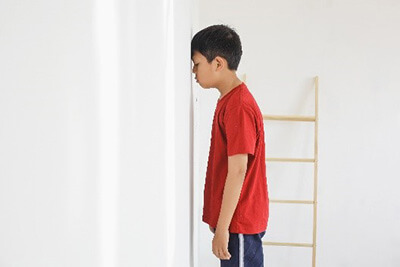If you have chanced upon this article but you haven’t had the opportunity to read Part 1 by the same name, then we strongly suggest that you begin there. If, however, you have reached here after Part 1 AND you are a teacher facing the very challenging classroom situations of ‘work refusal’, we empathise with you. Been there done it! Also know, that we do not wish to add pages of reading to compound your work nor your woes.
If you are unsure, stuck, helpless and don’t know how or where you are heading…try our guidelines and strategies; they’re worth a try since we hit successes with many of them. Remember though, even the most perfect classroom management and support strategies may NOT fix every problem or challenge.
How Can One Cope?
Parts 2 and 3 offer some strategies to consider when handling kids that are struggling and hence refusing to work. We completely get it if classroom teachers cannot do it all, nor do we expect them to. Perhaps schools (institutions with a solution-focussed culture) can help educators in these tough situations, with complementary support from admin and other staff. The biggest shifts in achieving success in this area can be attributed to making teachers, families, and the student work together in tandem – as Partners in Education.
There are certain DOs and DON’Ts that we have listed based on our experiences, research and sharing. In Part 2, we shall cover the latter and leave the icing on the cake for Part 3!
Let’s start with the DON’Ts…
-
… send the child out of the class. Often times, teachers believe that out of sight means out of my hair! Sending a child out from class to the corridor or to the Principal may appear to be a good option (because it deals with the situation swiftly for THAT teacher), but it does not fix the problem. In the long term, it makes matters worse, with the ousted child feeling anger and resentment towards the teacher and finding the corridor (with nothing to see-hear-do) an open space to misbehave even more!
Ousting a child from class sends the message that the teacher is unable to deal with the situation and that she is passing on her problem to another teacher or the Principal. If a student is just sitting at their desk and refusing to work, it should not be a reason to send them out of class – even non performing kids receive much more education by just being in the room and hearing the discussions, rather than being cornered in the staff room or principal’s office.
- … simply attribute it to laziness. From a child’s point of view, it is often actually easier for the child to comply and do their work than refuse. So, it’s clear that the work refusal is due to something else in play and not just laziness. A good tip here is to reframe one’s thinking and to never forget that the child could be struggling and may need our support.
- … get into a power struggle. I think as mature adults we all recognise the fact that no one ever wins in a power struggle, especially between adults and the kids! Not fair play at all if we look at the ages involved in the sparring! So much energy is wasted and even if the student eventually complies, s/he is bound to be filled with resentment.
- … appear or feel angry & frustrated. When the work refusal situation is becoming overwhelming, it is important to understand – “She’s not giving me a hard time, she’s having a hard time.” There is no shame in taking a deep breath and walking away from the tug-o’-war. The little eyes are upon us and children observe adults us on how we cope with challenges. We need to teach them that while facing challenges, we need time to contemplate, think things through and then respond with ideas for a way out; rather than having an unpleasant, knee-jerk violent reaction! It’s understandable to feel frustrated with a situation, but we must not act on that frustration. We must remain calm, collected and make the best choices in each situation.
- … punish the child. If a learner is struggling with some social or emotional challenges at the moment, a punishment is only going to push them further away. The punishment will appear as a harsh, mean, and an uncaring stance by the teacher. We know that teachers do not intend for punishments to feel that way, but for many students, punishments often do, especially for the ones with trauma in their past. That doesn’t mean that we “let the student get away” with any kind of behaviour! Instead, we can use the approach of logical consequences.
- … publicly embarrass the child. Calling out a ‘work-refusal’ student in front of the whole class (often with anger in the teacher’s tone) might result in a power struggle or escalation of the situation. All because the student feels belittled in front of his / her peers. Instead, teachers should consider ways to privately support the student to help both to get the work done.
- … threaten the child. As teachers and parents, we often end up making the proverbial “conditional statements” like, “If you don’t do your work, I’m going to inform your parents,” or “Finish this or you can’t go for your PE class.” Sometimes, these threats only make a student more adamant, stubborn and may corner him/her into digging their heels in deeper. When better sense prevails, we may even regret what we’ve said. Instead, we need to try to be mindful about what to say and make sure our stated consequences fit the ‘misbehaviour’.



Read Part 3 by the same name, to learn about what you CAN DO to work with “work refusal” children and lead them into productive work with independence. ***


